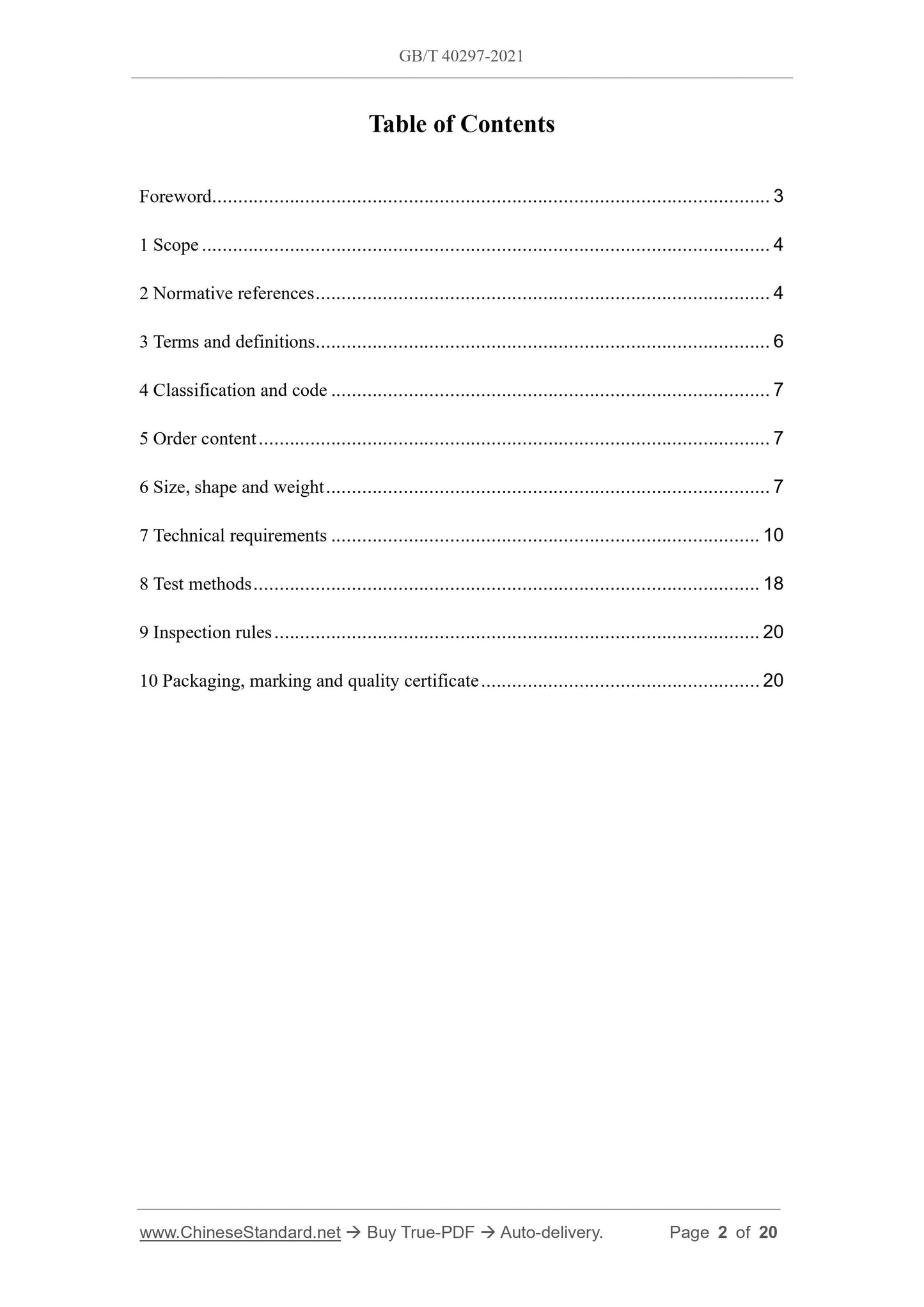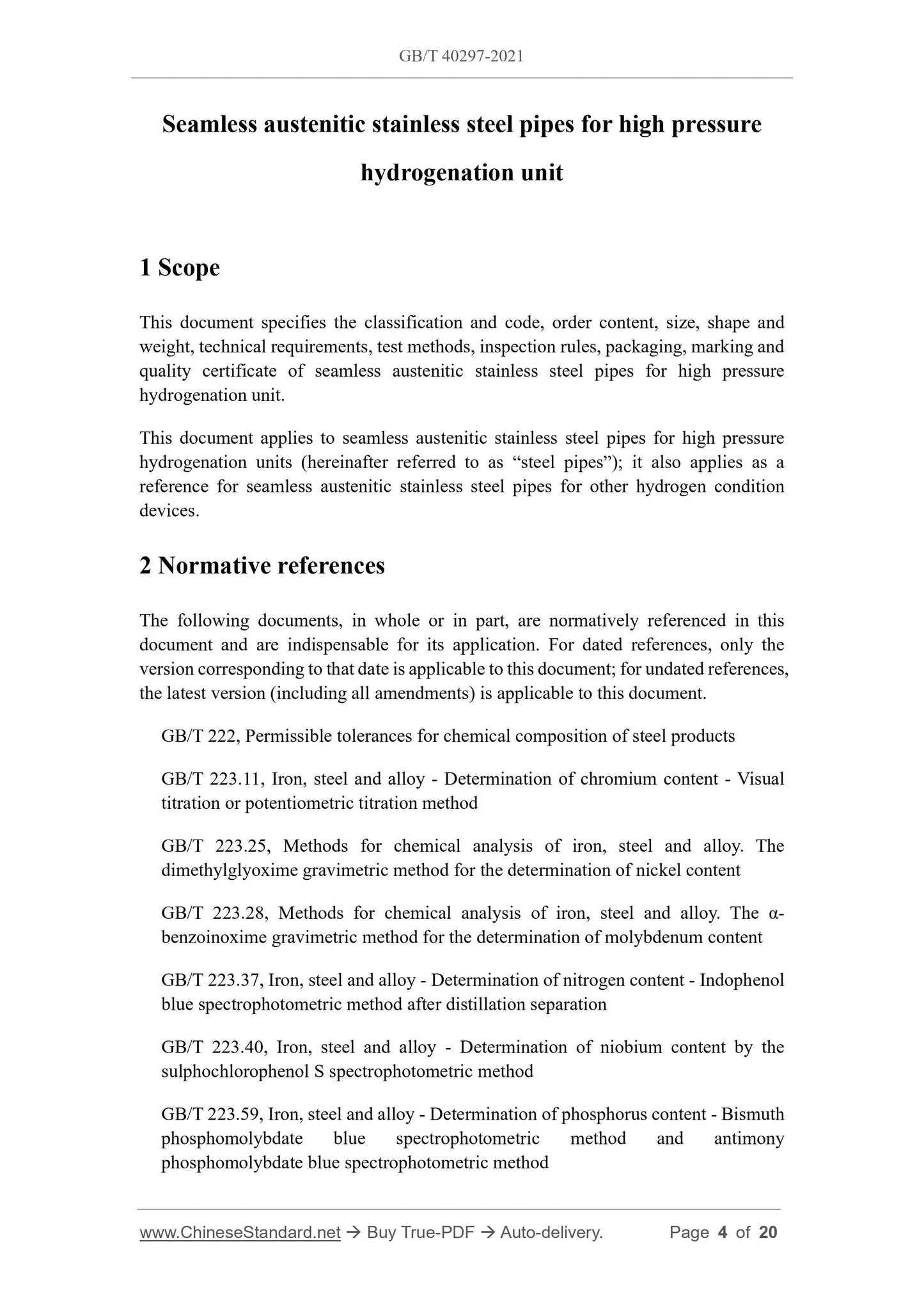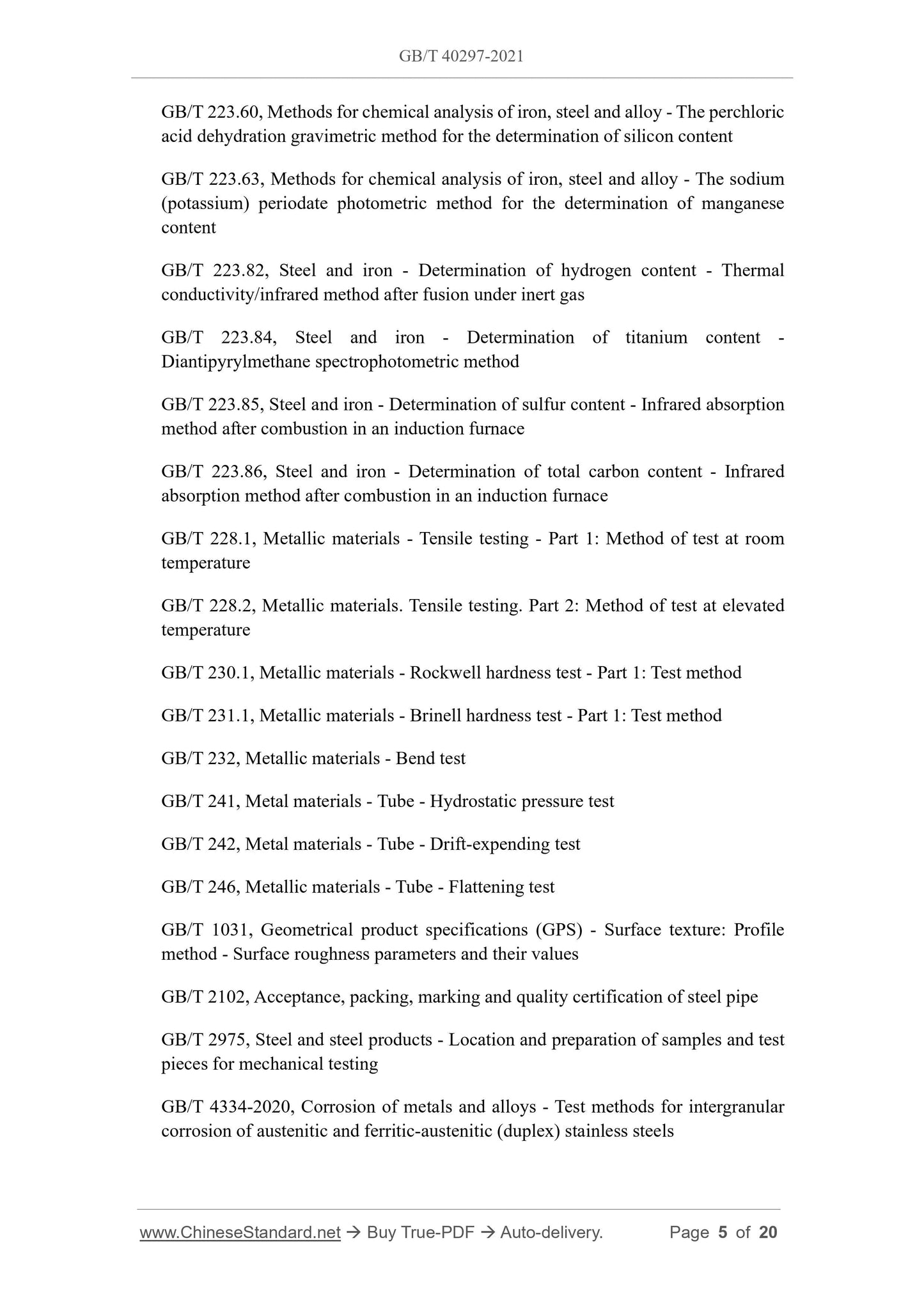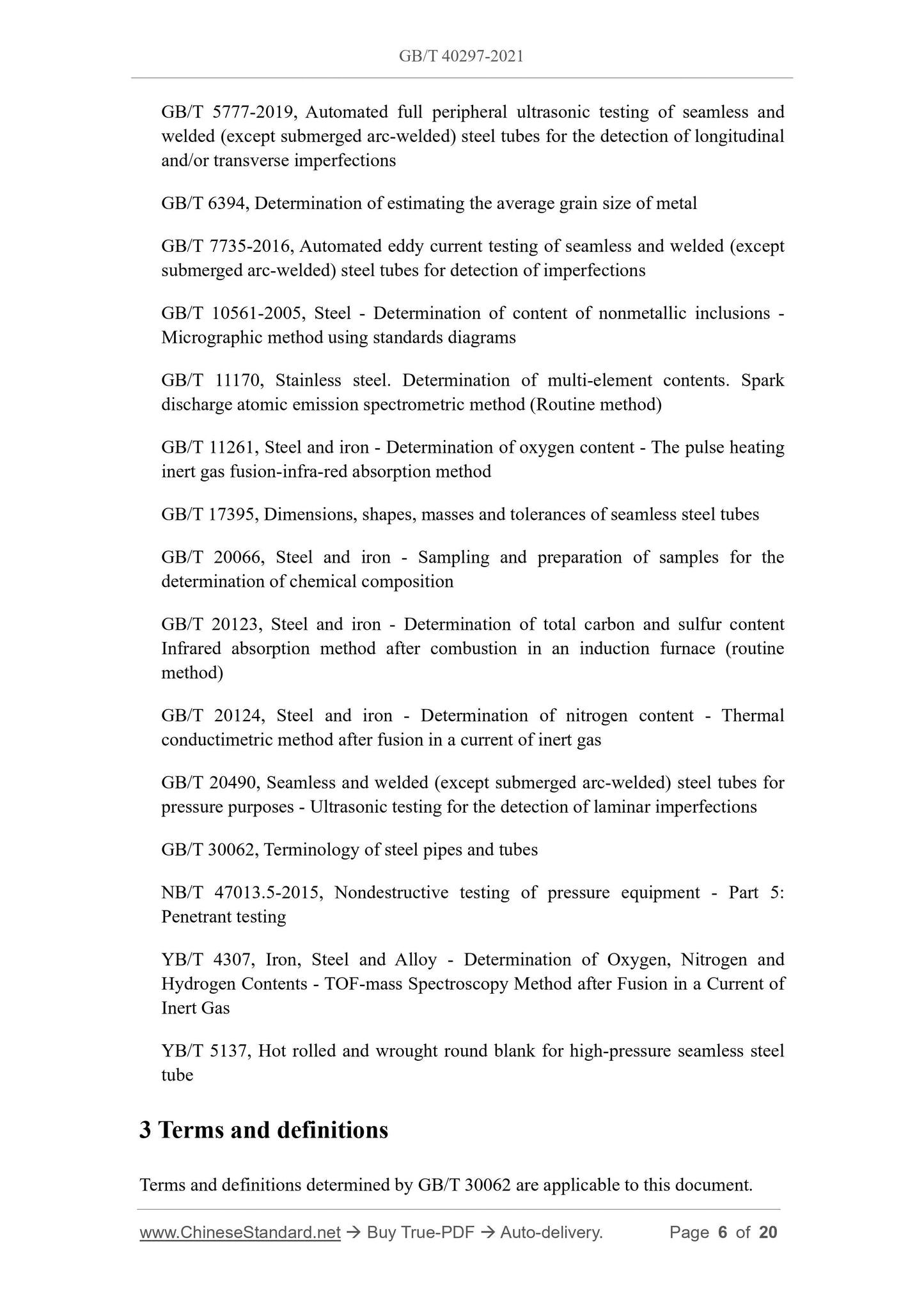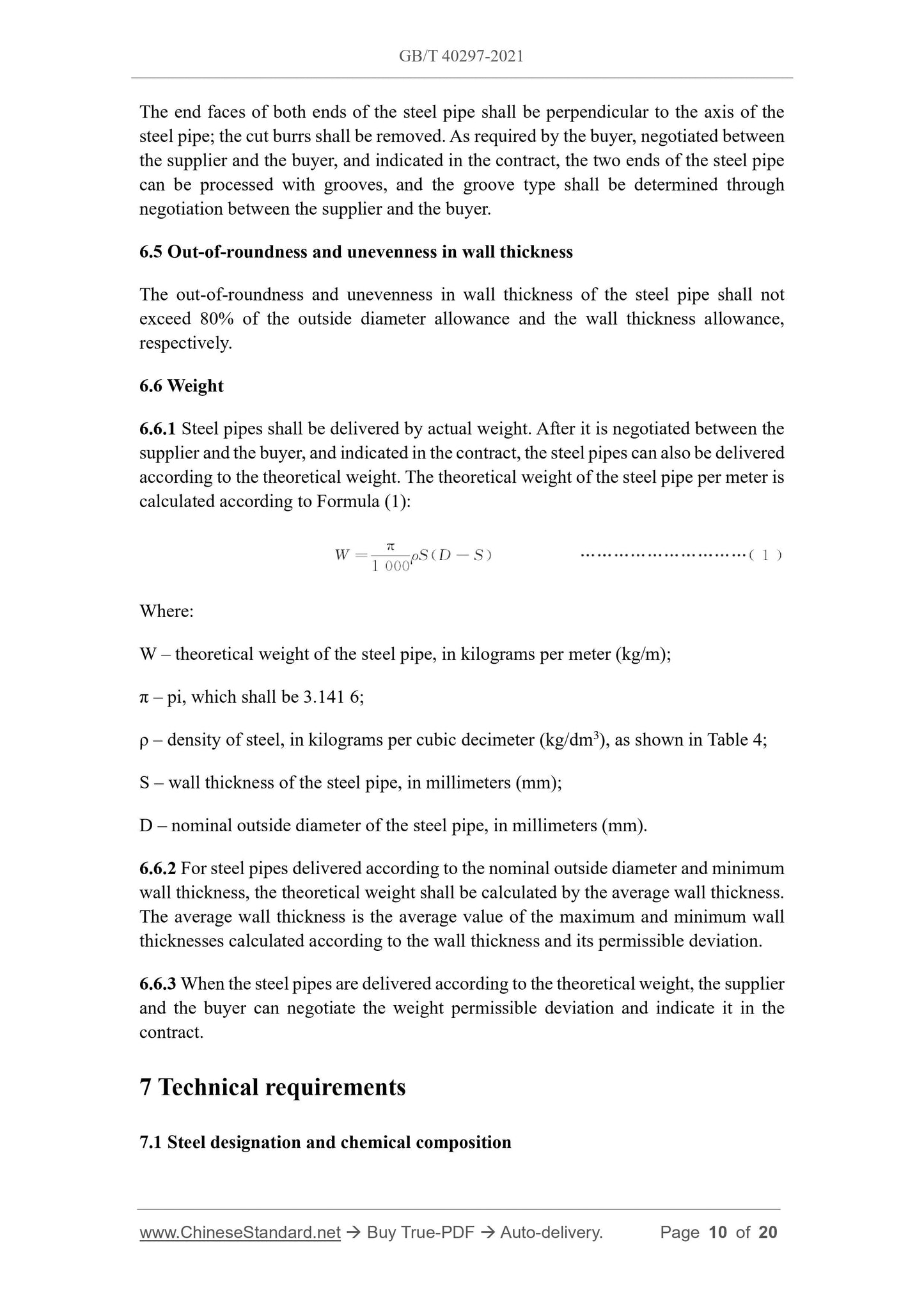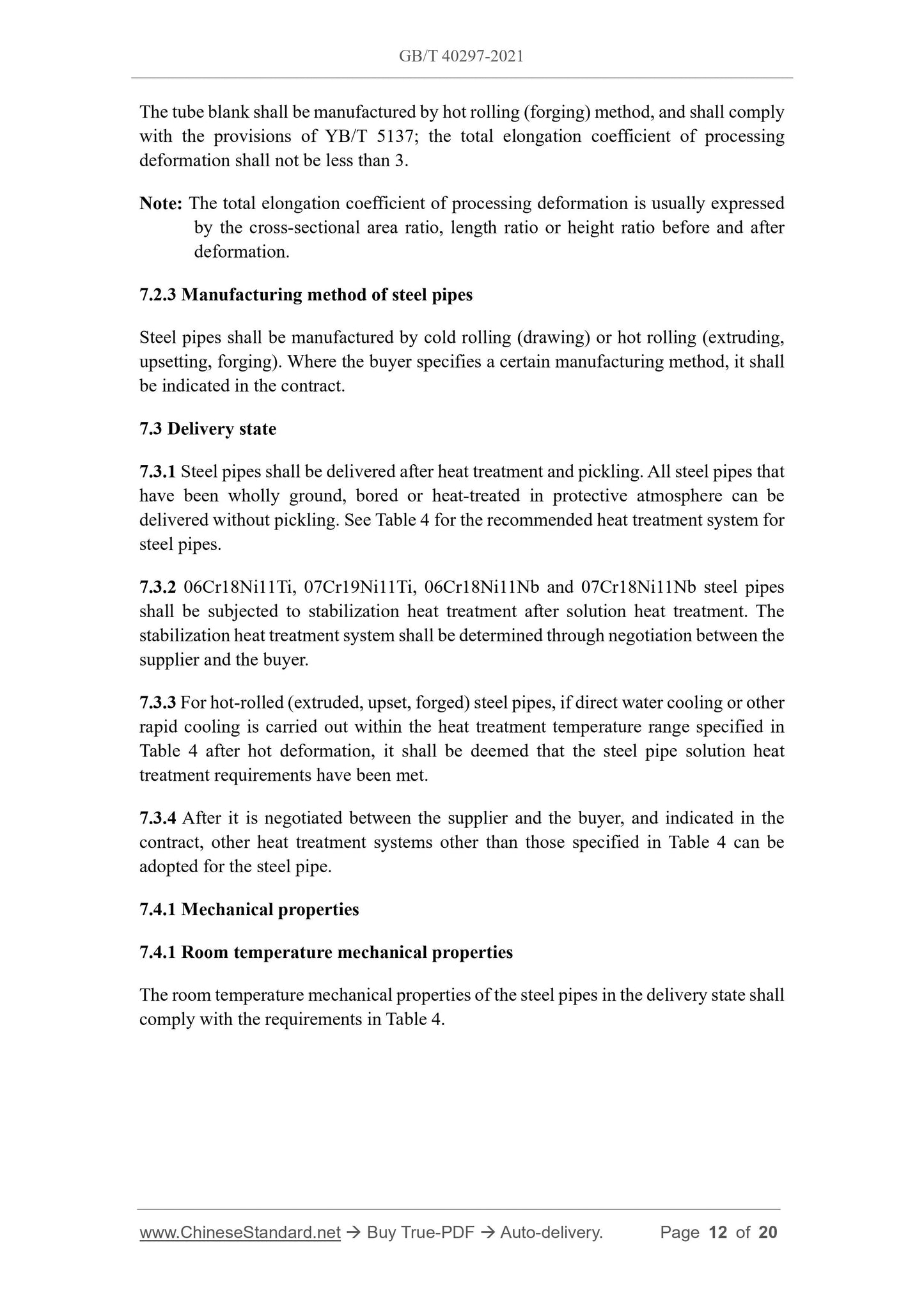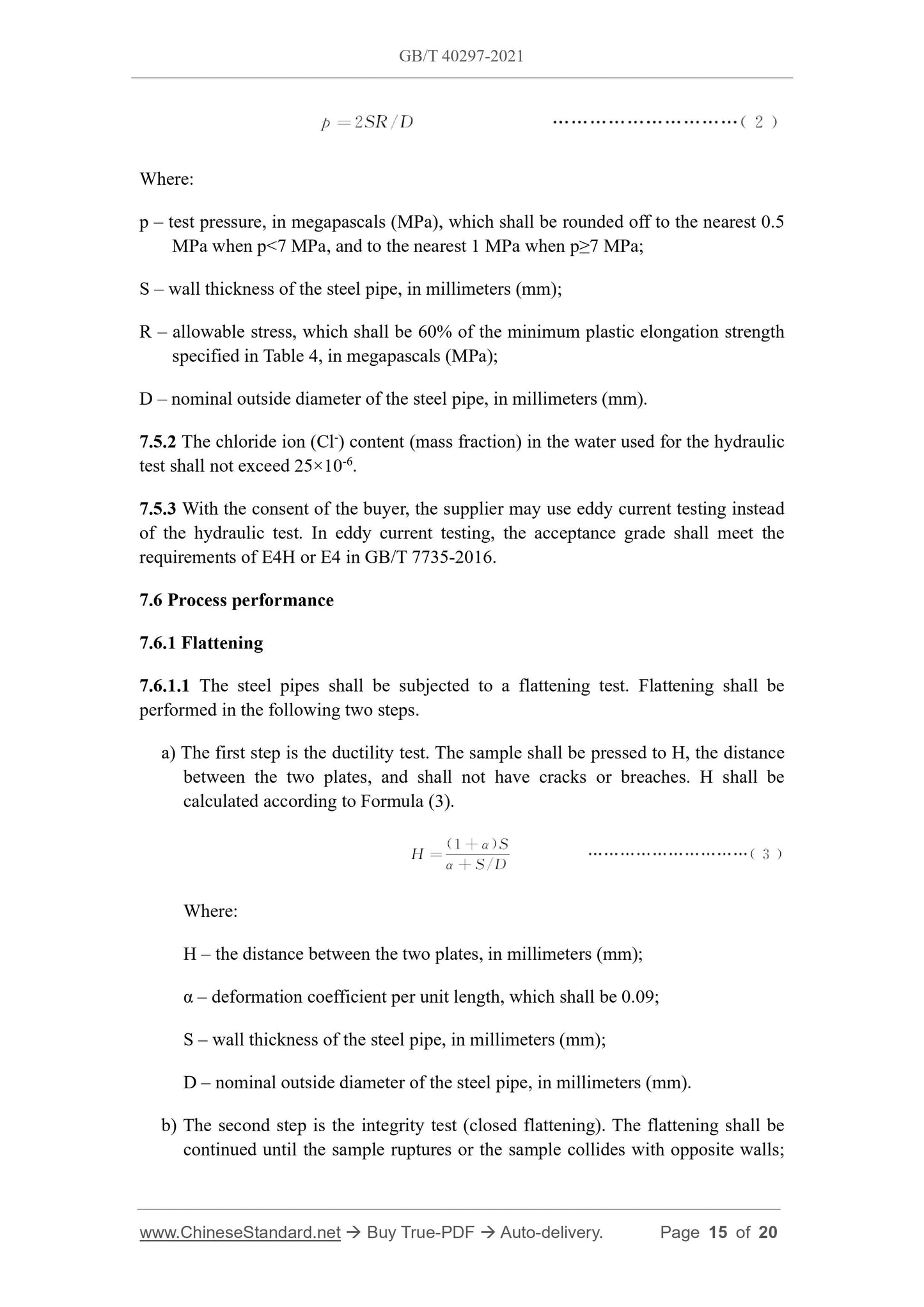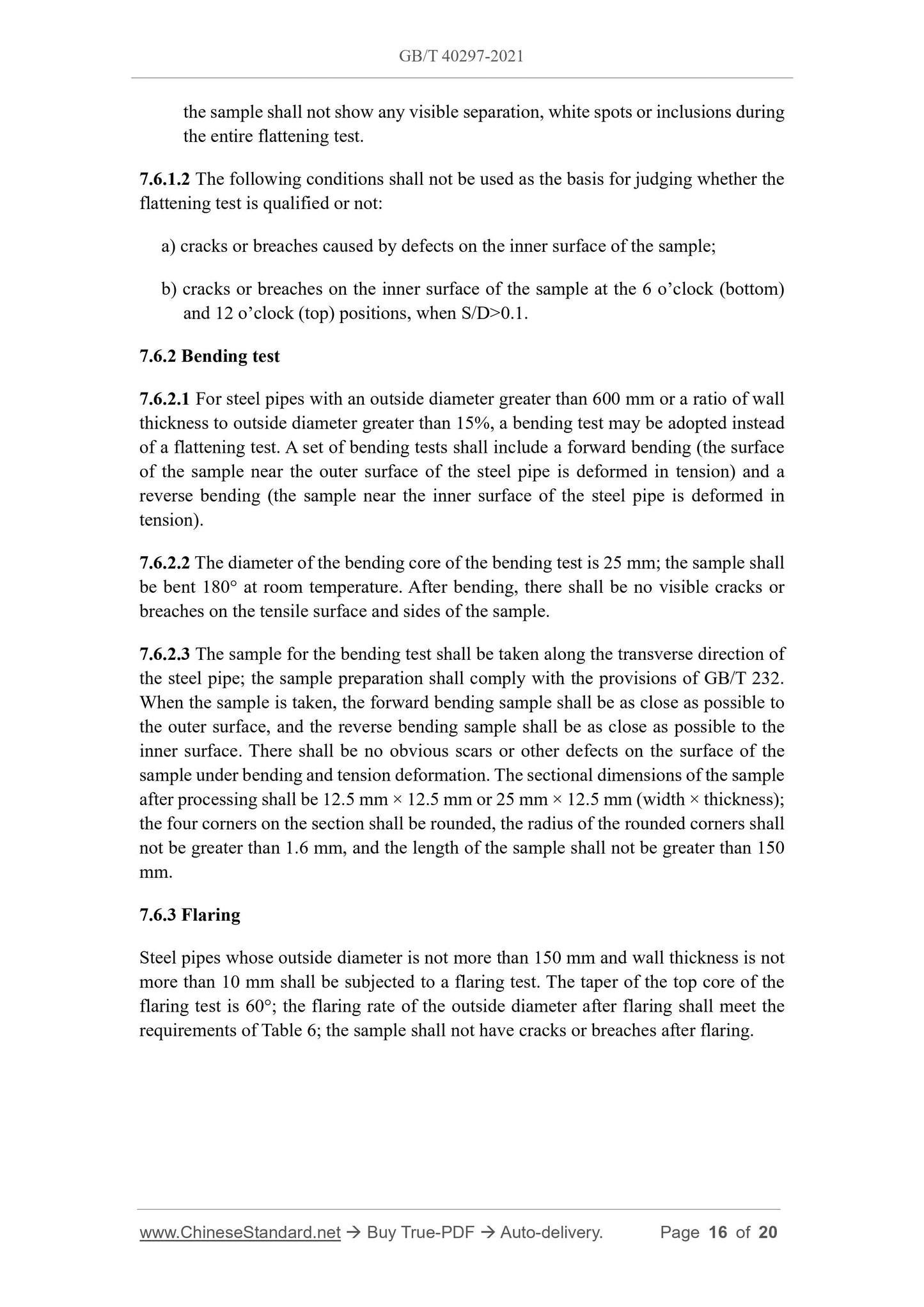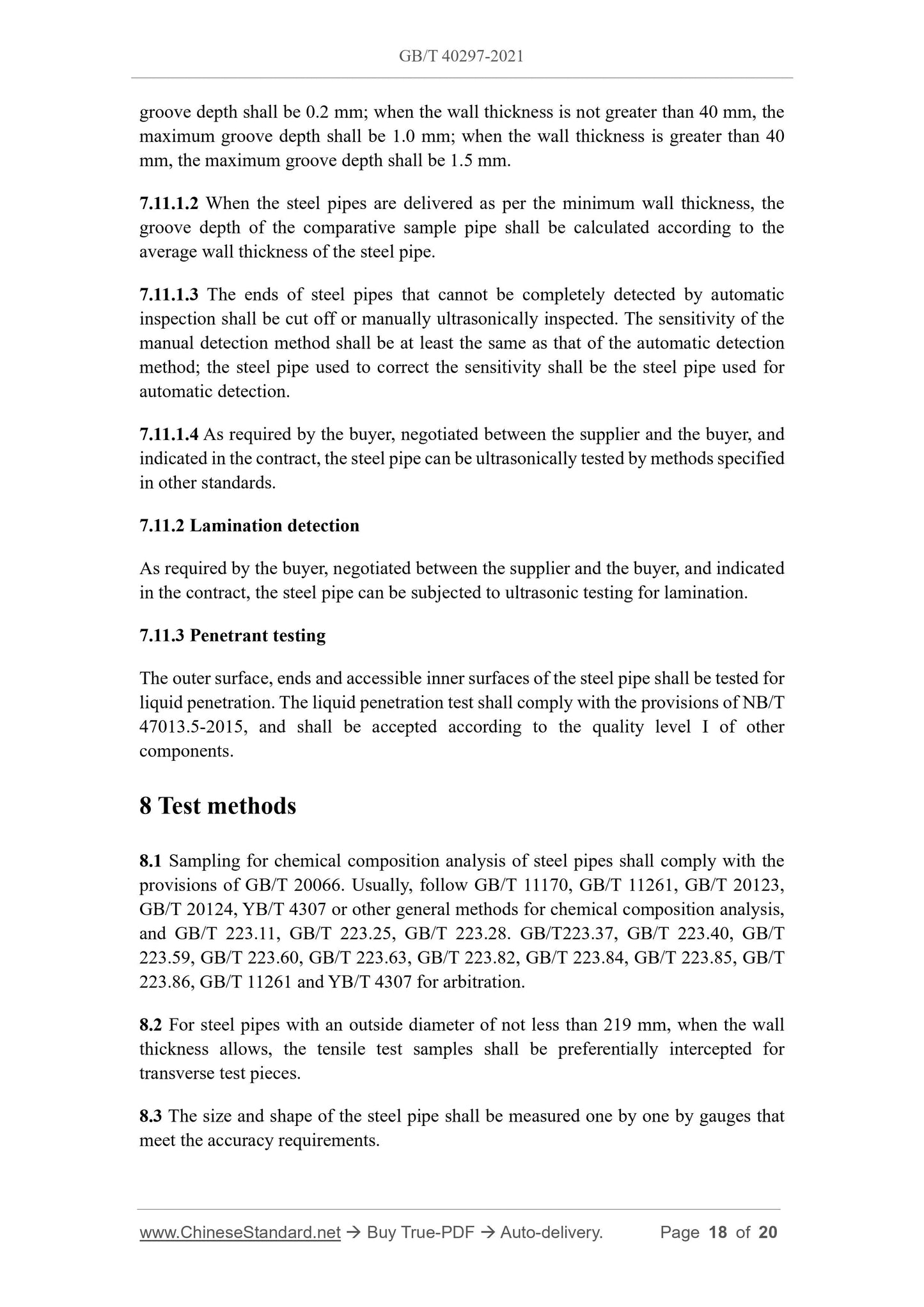1
/
of
10
www.ChineseStandard.us -- Field Test Asia Pte. Ltd.
GB/T 40297-2021 English PDF (GB/T40297-2021)
GB/T 40297-2021 English PDF (GB/T40297-2021)
Regular price
$230.00
Regular price
Sale price
$230.00
Unit price
/
per
Shipping calculated at checkout.
Couldn't load pickup availability
GB/T 40297-2021: Seamless austenitic stainless steel pipes for high pressure hydrogenation unit
Delivery: 9 seconds. Download (and Email) true-PDF + Invoice.Get Quotation: Click GB/T 40297-2021 (Self-service in 1-minute)
Newer / historical versions: GB/T 40297-2021
Preview True-PDF
Scope
This document specifies the classification and code, order content, size, shape andweight, technical requirements, test methods, inspection rules, packaging, marking and
quality certificate of seamless austenitic stainless steel pipes for high pressure
hydrogenation unit.
This document applies to seamless austenitic stainless steel pipes for high pressure
hydrogenation units (hereinafter referred to as “steel pipes”); it also applies as a
reference for seamless austenitic stainless steel pipes for other hydrogen condition
devices.
Basic Data
| Standard ID | GB/T 40297-2021 (GB/T40297-2021) |
| Description (Translated English) | Seamless austenitic stainless steel pipes for high pressure hydrogenation unit |
| Sector / Industry | National Standard (Recommended) |
| Classification of Chinese Standard | H48 |
| Word Count Estimation | 14,140 |
| Issuing agency(ies) | State Administration for Market Regulation, China National Standardization Administration |
Share

